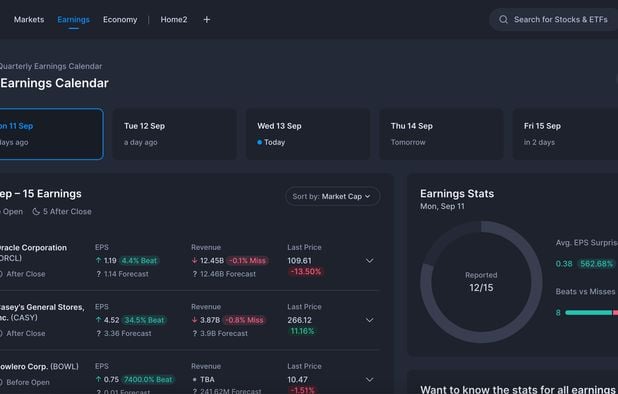When evaluating AI trading platforms compatibility and integration are crucial aspects. An integrated platform that is seamless with your existing tools such as systems, workflows, and processes will greatly improve efficiency and effectiveness. We've compiled our top 10 recommendations for assessing the compatibility and integration of these platforms.
1. Check Brokerage Integration
Supported Brokers: Check that your platform is compatible with your brokerage account or trading platform.
Trade Execution: Verify whether the platform allows direct trade execution through the integrated broker.
Account synchronization - Examine to determine if your system is capable of syncing accounts' balances, transactions and positions in real-time.
2. Check API Availability
API access: Ensure that the platform you choose to use has an API (Application Programming Interface), which lets developers create custom applications and streamline workflows.
API documentation - Check that the API's example and usage examples are well-documented.
Limitations on rate. Make sure that the API you're looking at has reasonable rate limitations and can handle your usage volume.
3. Check Third-Party Tool Integrity
Popular tools: Make sure that the platform can be integrated with tools like Excel or Google Sheets.
Export and import of data. Be sure the platform is able to easily export or import from or into any other software.
Plugins/extensions: Verify if the platform is compatible with extensions or plugins for further functionality.
4. Test Compatibility Using Operating Systems
Desktop compatibility: Make sure that the software works with your preferred operating system (Windows, macOS, Linux).
Mobile compatibility Check whether the platform provides apps that works with iOS or Android.
Web-based accessibility: To enhance flexibility, verify that the interface of the platform can be accessed through an internet browser.
5. Assessment of the Data Integration Capabilities
Data sources: Make sure that the platform is able to integrate multiple sources of data, like the market data providers RSS feeds, social media sentiment.
Real-time analytics: Be sure the platform incorporates real-time analytics.
Find out if your platform supports the import of historical data to analyze or backtest.
6. Check cloud and on-premise compatibility
Cloud-based platforms: Ensure that the platform can be accessed from anywhere that has an internet connection.
On-premises solutions: Check whether you'd like to install the software on your own premises.
Look into the hybrid model. It is a hybrid model that combines on-premise and cloud capabilities.
7. Check for Cross-Platform Synchronization
Device synchronization: Ensure your platform syncs settings and data across all devices (desktop, tablet, mobile).
Verify whether changes made on one device reflect on another.
Examine the platform to determine whether it allows data or functionality access even when you're offline.
8. Evaluate Compatibility with Trading Strategies
Algorithmic trading - Ensure that the trading platform you select supports automated or algorithms trading strategies.
Custom indicators. Verify if the platform allows the use of scripts or technical indicators.
Strategy backtesting: Check if the platform supports backtesting strategies for trading using historical data.
9. Assess Security and Compliance
Data encryption - Ensure that your platform is using encryption for all data at all times, including when it is in rest.
Authentication : Verify that the platform is compatible with authentic methods that are safe (e.g. two-factor verification).
Regulatory Compliance: Check if your platform complies the relevant regulations.
10. Test Scalability and Performance
Scalability: Ensure the platform can handle increasing amounts of users and data as the demands of your business grow.
Performance during load: Verify whether the platform responds in high-volatility situations.
Resource usage - Check whether the platform is using system resources such as CPU, memory, or bandwidth.
Bonus Tips
User feedback: Check out reviews and testimonials of users to evaluate the platform's capacity to integrate.
Trial period: Take advantage of a free trial or demo to discover how the platform works with other processes and tools.
Support for customers: Make sure the platform offers robust support for integration-related issues.
By following these tips, you can effectively assess the integration and compatibility of AI stock Predicting/Analyzing trading platforms in order to ensure they are compatible with your existing systems, and improve the efficiency of your trading. Read the top best ai for trading for site recommendations including ai trading, options ai, ai investing platform, incite, stock ai, stock ai, AI stock trading bot free, trading with ai, AI stock trading app, ai trading tools and more.

Top 10 Tips On How To Assess The Speed And Latency Of The Ai Stock Predicting/Analyzing Trading Platform
Latency and speed are critical aspects to consider when considering AI stock Predicting/Analyzing trading platforms, especially for active traders, algorithmic traders as well as high-frequency traders. Milliseconds delay could have a negative impact on the execution of trades. Here are the top 10 tips for assessing the latency and speed of these platforms.
1. Real-time data feeds that are to be analyzed
Data delivery speed Make sure your platform provides live data (e.g. sub-millisecond delay).
Nearness of the data source: To reduce the amount of time required to transfer data, make sure if your platform's servers can be found near exchanges that are major.
Data compression: Make sure that the platform uses efficient data compression to speed up data delivery.
2. Check the trade execution speed
Processing orders: The platform's ability to complete and process trades fast when an order is placed.
Direct market access (DMA): Ensure that the platform supports DMA which lets orders be sent directly to the exchange without intermediaries.
Execution Reports: Verify if your platform provides detailed reports on the execution of orders, with timestamps.
3. Examine the Platform's Responsiveness
User interface (UI) speed: Check how quickly the platform's UI responds to your inputs (e.g., clicking buttons or loading charts).
Chart updates: Verify that charts and visualisations update in real-time, with no lag.
Mobile app performance. If you're using a smartphone app, it should perform as quickly as the desktop version.
4. Check for Low Latency Infrastructure
Server locations The platform must use high-speed, low-latency servers that are located close to major exchanges or financial hubs.
Co-location: If your platform provides co-location, you can host your trading algorithm on servers close to the exchange.
High-speed network: Verify whether the platform is using high-speed fibre-optic networks, or other technologies with low latency.
5. Assess backtesting and simulation speed
Check how quickly the platform processes and analyzes old data.
The latency of the platform must be minimal enough to allow for live simulations of trades in real time.
Parallel processing: Find out if the platform utilizes parallel processing or distributed computation to speed up complex calculations.
6. Calculate the API Latency
API response time Measuring how quickly the platform's API responds (e.g. getting market data or placing orders).
Rate limits: Make sure that the API has reasonable limits on rates so that there are no delays during high-frequency trading is taking place.
WebSocket support: Check whether your platform is using WebSocket protocols for real-time and low-latency data streaming.
7. Test Platform Stability using Load
High-volume trades to test the platform's responsiveness and stability, simulate high-volume scenarios.
Market volatility: Try out the platform during times of high volatility in order to test whether it can manage rapid price changes.
Utilize the tools available on the platform to test your strategies in extreme circumstances.
8. Evaluate Network and Connectivity
Internet speed requirements: Ensure your internet connection is running at the recommended platform speed.
Redundant Connections: To avoid delay, verify that the platform can support redundant internet connections.
VPN latency. Verify if you are using the VPN if this introduces latency.
9. Make sure you are using Speed Optimization features.
Pre-trade analytics: Make sure that the platform offers pre-trade analytics to optimize order routing and execution speed.
Smart Order Routing (SOR). Check if the platform is using SOR to identify the fastest and most efficient execution sites.
Use the tools available on the platform to analyse and monitor the latency in real-time.
Benchmarks for User Feedback Review
User reviews: Conduct research to assess the platform's speed and latency.
Benchmarks provided by third parties: Look for reviews and benchmarks from independent sources that compare the platform's performance to its competitors.
Case studies: Ask the platform whether it has case studies or testimonials that show its capabilities for low latency.
Bonus Tips
Trial period: You can avail a demo for free or a trial period to evaluate the performance and latency of the platform.
Customer support: Check to find out if the platform offers assistance for issues with latency or optimization.
Hardware requirements: Determine if the platform requires specific hardware to ensure the best performance.
Following these tips can aid in assessing the performance of AI trading platforms that forecast or analyze stock prices. You can choose a trading platform that is the most suitable for your needs in trading and reduces any delay. A low latency is essential for algorithmic and high-frequency traders. Even minor delays can have a huge impact on profitability. Take a look at the top learn more on investing with ai for blog advice including ai options, best AI stocks to buy now, ai trading tool, best stock prediction website, chart ai trading, how to use ai for copyright trading, how to use ai for copyright trading, ai software stocks, stock trading ai, ai options trading and more.
